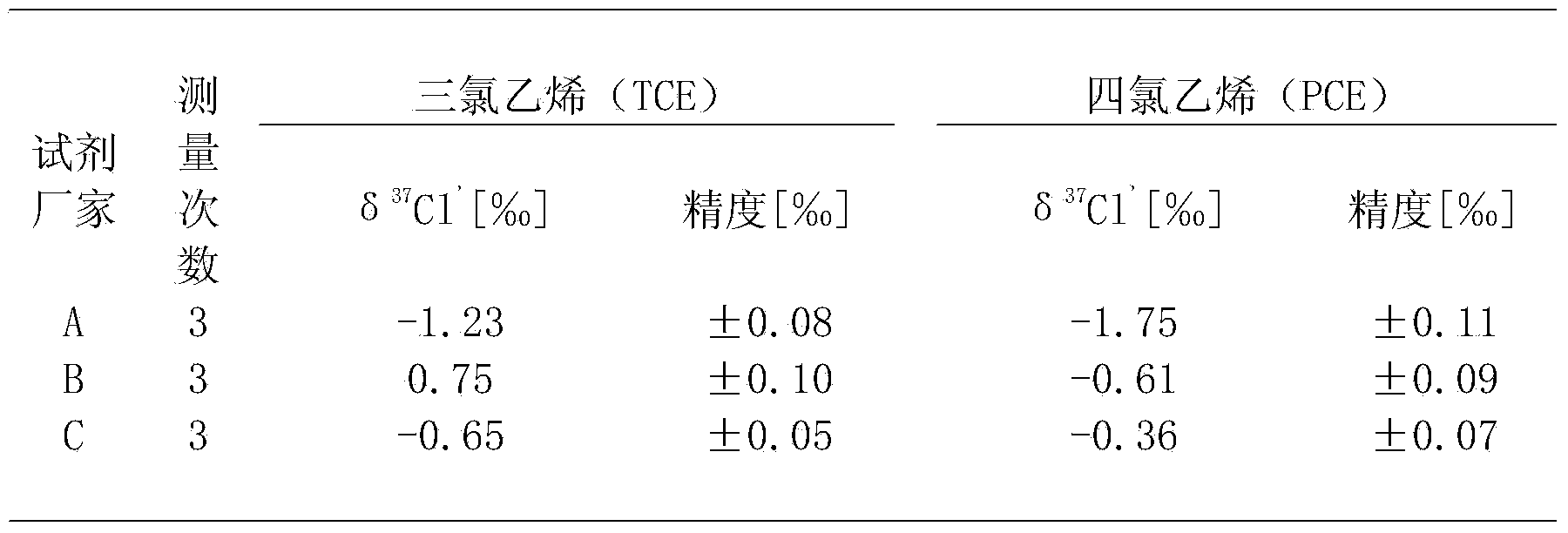Low-temperature conversion and measurement method of chlorine isotope in chlorohydrocarbon
A chlorine isotope, low temperature conversion technology, applied in the fields of food, environmental protection, medicine, and geology, can solve the problems of difficult to master and high risk factor, and achieve the effect of easy promotion, less interference and low risk factor
- Summary
- Abstract
- Description
- Claims
- Application Information
AI Technical Summary
Problems solved by technology
Method used
Image
Examples
Embodiment 1
[0039] The ratio of chlorine isotopes in trichlorethylene (TCE) and tetrachlorethylene (PCE) produced by three different reagent manufacturers (Tianjin Guangfu, Sinopharm and Chromatography) is determined as follows:
[0040] A. Prepare a 10mL derivative bottle, add 2mL of pure water, add 0.03g of ferrous sulfate powder, add 1.5mL of sodium persulfate solution with a concentration of 5g / L, shake well and let stand;
[0041] B. Take 10uL of trichlorethylene (TCE) and tetrachlorethylene (PCE) reagents and inject them below the liquid surface, then add 2.5mL of 1% hydrogen peroxide, quickly cover the derivative bottle cap, and shake evenly;
[0042] C. Place the reaction vessel in an ultrasonic instrument and perform an ultrasonic reaction for 10 hours at a temperature range of 55 degrees. 2.5h, 65°C-1.5h, time-consuming is shorter and the effect is better); then put the reaction vessel in the UV analyzer (Shanghai Anting Electronic Instrument Factory, ZF-2 three-purpose UV analy...
PUM
 Login to View More
Login to View More Abstract
Description
Claims
Application Information
 Login to View More
Login to View More - R&D
- Intellectual Property
- Life Sciences
- Materials
- Tech Scout
- Unparalleled Data Quality
- Higher Quality Content
- 60% Fewer Hallucinations
Browse by: Latest US Patents, China's latest patents, Technical Efficacy Thesaurus, Application Domain, Technology Topic, Popular Technical Reports.
© 2025 PatSnap. All rights reserved.Legal|Privacy policy|Modern Slavery Act Transparency Statement|Sitemap|About US| Contact US: help@patsnap.com



